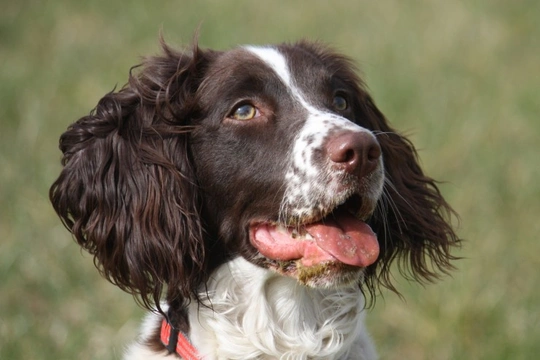
Fucosidosis (FUCO) testing for Springer spaniels
Fucosidosis is a hereditary health condition that has been identified in the springer spaniel dog breed, which presents with a range of symptoms including loss of coordination, inability to control normal movement, loss of sight and hearing, and changes in temperament. It can also appear that affected dogs forget or un-learn commands and rules that they previously reliably adhered to.
The condition is a progressive one that usually begins to become apparent in younger dogs, between the age of around 18 months and four years, and ultimately proves fatal. There is no cure for the condition nor any means of reversing it; the only way to prevent any given dog from developing the condition is to test potential parent dogs for the markers of it, so that an informed decision can be made on whether or not to breed.
The gene mutation that causes Fucosidosis was discovered in the 1990’s, and a DNA test is available to identify the problem in adult dogs, allowing them to be tested prior to breeding. The Kennel Club, in association with the British Veterinary Association, manages a testing scheme for the condition, to allow potential springer spaniel breeders to test their dogs prior to making a decision about the viability of their breeding stock.
In this article, we will look at Fucosidosis in springer spaniels in more detail, including how dogs can be tested for the condition, how the heredity of the condition works, and how it affects dogs. Read on to learn more.
More about Fucosidosis
Fucosidosis is a lysomal storage disease that is named because the condition occurs due to a missing enzyme that usually works to break down compounds into smaller molecules that the body can make use of. The missing enzyme, alpha-L-fucosidase, causes blockages in the cell pathways that leads to an accumulation of complex compounds in major organs such as the liver, lungs and kidneys, as well as other areas of the body including the lymph nodes and bone marrow.
However, the effect that the condition has in the nerves and brain itself is the most serious element of the illness, as this leads to a range of serious problems including the loss of learned behaviour, progressive incoordination, loss of hearing and vision, temperament changes and a whole host of other problems too.
The condition’s progression cannot be halted or reversed, and ultimately, proves fatal.
What sort of dogs can be affected by the condition?
Fucosidosis has been identified as a threat to the springer spaniel dog breed, and can affect both Welsh and English springers. It can of course also affect cross breed dogs with some springer spaniel ancestry, and hybrid or designer breeds with springer origins too, such as the Sprocker.
The condition usually begins to become apparent in dogs between the ages of eighteen months and four years of age, and because it does not usually present in very young dogs, there is an additional risk that affected dogs will be bred from unwittingly before the symptoms of the condition become apparent.
How does the heredity of the condition work?
Fucosidosis is an autosomal recessive hereditary health condition, which means that the only way a dog can contract the condition is by inheriting a certain combination of faulty genes from their parent dogs. Parent dogs can be either clear, affected, or carriers of the condition, and different combinations of heredity from the dam and the sire respectively result in different outcomes for the litter.
- If neither parent dog is affected by nor a carrier of the condition, their litter will not be either.
- If the two parent dogs are both affected, their litter will be too.
- One clear parent and one affected parent will result in all of their litter becoming carriers.
- One carrier parent and one affected dog will result in each puppy having a 50% chance of being affected or a carrier themselves.
- If both parent dogs are carriers, the odds for the litter are 50% carrier, 25% affected and 25% clear.
How to get your dog tested
Anyone who owns a springer spaniel that they are considering using for breeding is strongly advised to have the status of their dog tested prior to going ahead, and using this information in conjunction with the results for the other dog in the planned match to make an informed decision.
To get your dog tested for the markers of the condition and return their results, you just need to ask your vet to take a DNA sample from your dog, which simply involves them taking a blood sample or buccal swab, which is then sent off to one of The Kennel Club’s approved laboratories who can test it, and return the result.
For information on the laboratories that can carry out the test, check out this list on The Kennel Club’s website.



